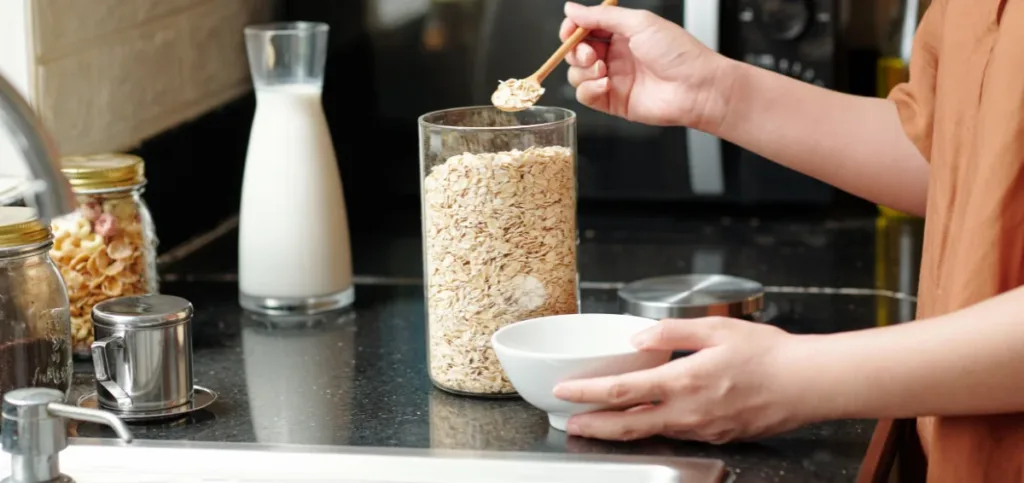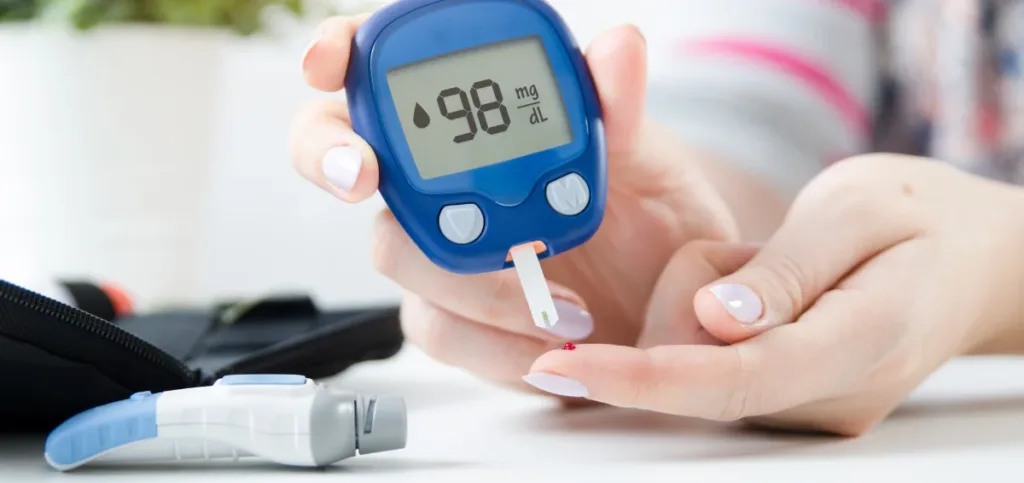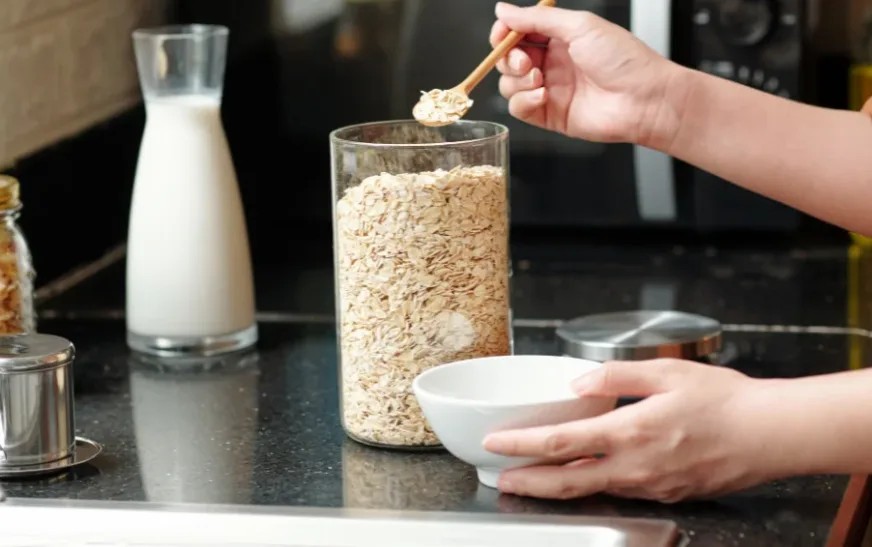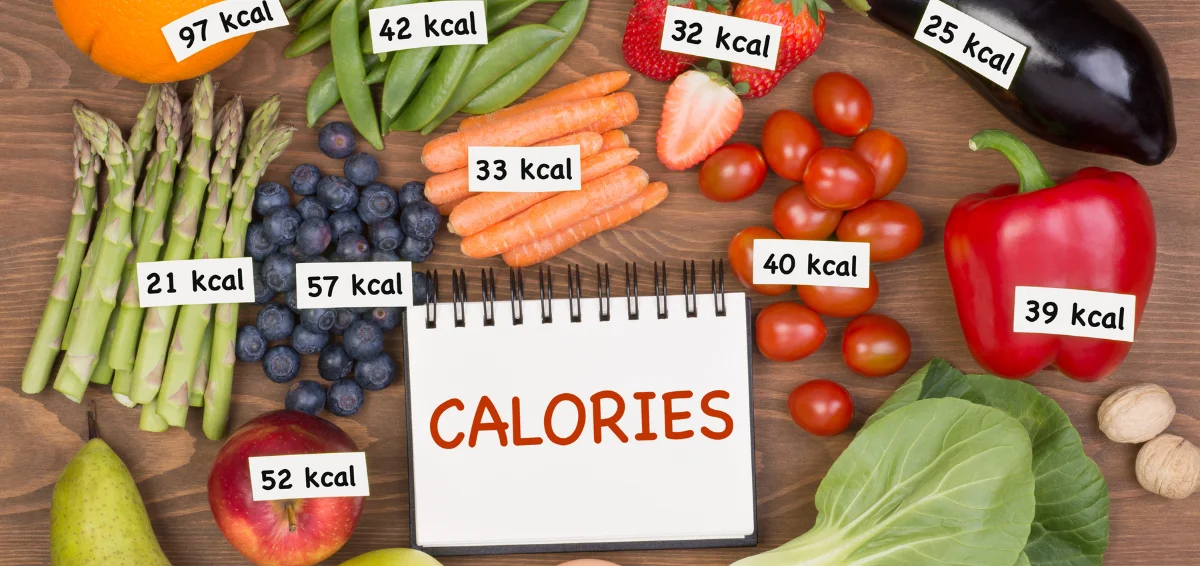
Managing diabetes is about more than just avoiding sugar. It is about finding foods that offer balance and nourishment. Oatmeal often gets mixed reviews. Some call it a diabetic superfood. On the other hand, some warn against its carbs. So, is oatmeal good for diabetics?
In this blog, you will learn everything about oatmeal. You will look at benefits, risks, best practices, and how to make your bowl blood-sugar friendly.
Understanding Diabetes and Carbohydrates
Diabetes changes how your body absorbs carbohydrates. After a meal, carbohydrates are broken down into glucose. In a normal body, insulin transports glucose into your cells. With diabetes, this is not done properly, and that results in elevated blood sugars.
So, carb quality and quantity are so important. Not all carbs are created equal. Simple carbs spike blood sugar fast, while complex carbs like oats digest slowly and offer sustained energy. Still, portion control and preparation methods matter.
Related Post: Low-Carb Snacks
Nutritional Profile of Oatmeal
Oats are whole grains loaded with nutrients. Here are the things that you get from 1 cup of plain cooked oats.
- Around 150 calories
- 27g carbohydrates
- 4g fiber (mostly soluble fiber)
- 5g protein
- 2.5g fat
- Vitamins like B1 and B5
- Minerals like magnesium, iron, and zinc
It slows the digestion. It lowers the level of cholesterol and helps stabilize blood sugar, which makes oatmeal an attractive option for people managing diabetes.
Is Oatmeal Good for Diabetics?
The short answer is yes, it can be. However, it depends on the way you make it. Here are some choices:
- You choose the right type of oats (like steel-cut or rolled).
- You skip the sugary toppings.
- You watch your portion size.
- You pair it with protein and healthy fats.
It offers long-lasting energy without spiking blood sugar when you make it correctly. However, if you make the wrong choices, then it can do more harm than good.
Benefits of Oatmeal for Diabetics
1. Stabilizes Blood Sugar

Oatmeal contains soluble fiber, especially beta-glucan. It forms a gel-like substance in your gut. It slows down the digestion process and the absorption of carbohydrates. This further prevents the sharp rises in blood sugar. This is highly beneficial for people with diabetes. A slower release of glucose means better control and fewer spikes.
2. Improves the Cholesterol Level

Many diabetic people deal with high cholesterol, which further raises the risk of heart disease. The beta-glucan in oats helps reduce the level of LDL (bad) cholesterol without lowering HDL (good) cholesterol. This fiber binds to cholesterol-rich bile in the gut and helps flush it out. Lowering LDL levels can improve heart health. A bowl of oats a few times a week can have measurable effects on your lipid profile over time.
3. Promotes Gut Health

Oats act as prebiotics. It feeds the good bacteria in your digestive system. A healthy gut microbiome plays a critical role in metabolism and inflammation. Plus, it affects the insulin response of the body. Better gut health may lead to improved glucose control for diabetics. The soluble fiber in oats promotes the level of microbial diversity and provides smoother digestion, unlike some of the worst foods for gut health, which can disrupt this balance. Eating oatmeal regularly can reduce constipation and keep your gut balanced.
4. Helps With Weight Management

Oatmeal is filling. It helps you to avoid snacking or overeating later in the day. The fiber and protein in oats slow down the feeling of hunger. It is important for those who are dealing with diabetes, as it is essential to maintain a healthy weight for proper blood sugar control. You can start your day with a hearty, fiber-rich bowl of oats. It will reduce your overall calorie intake and help with gradual, sustainable weight loss goals.
5. Easy to Customize
One of oatmeal’s biggest advantages is its flexibility. You can make it sweet, savory, creamy, or crunchy, all without messing up your blood sugar. There are some add-ins, like chia seeds, nuts, Greek yogurt, etc., that can make it more filling and nutritious. For diabetics, this means a single meal can be adjusted to fit your dietary needs and flavor preferences. You’re never stuck eating the same thing, and that keeps your healthy habits sustainable.
Risks and Considerations
There are several benefits of oatmeal, but it isn’t perfect. Here are some risks that you must keep in mind.
1. High Carbohydrate Load
Even healthy carbs can spike blood sugar when eaten in large amounts. A big bowl of oats may contain 40+ grams of carbs. This can be too much for some people.
2. Instant Oats Can Be Problematic
Flavoured instant oats often come packed with added sugars. The plain versions are more processed and digest faster, which further raises the risk of a sugar spike.
3. Response Varies by Person
Some diabetics tolerate oats well. On the other hand, some individuals experience a sudden increase in glucose levels. It is best to check your blood sugar before and after eating oatmeal to see how your body reacts to it.
4. Overdoing Toppings
You have to remember that adding sugar, syrup, or sweetened dried fruits can undo all the health benefits. So, always read labels and opt for natural, low-GI options.
Best Types of Oatmeal for Blood Sugar Control
Not all oats are created equal. Here are some types that you can add to your routine.
Steel-Cut Oats
These are the least processed and take longer to cook. On top of this, they have the lowest glycemic index and are best for stable blood sugar.
Rolled Oats
They are more processed than steel-cut, but still a good option. They cook faster and offer a chewy texture.
Quick Oats
These are thinner than rolled oats and cook in a few minutes. They’re a middle-ground option but digest quicker.
How to Prepare Oatmeal the Diabetic-Friendly Way

Preparation is everything. Here is a way to make oatmeal properly.
- Cook oats in water or unsweetened almond milk
- Skip the sugar, syrup, and honey
- Add protein (like egg whites, Greek yogurt, or protein powder)
- Include healthy fats (nut butter, chia seeds)
- Top with berries or sliced apples instead of bananas or raisins
You have to keep in mind that portion size matters. Stick to half a cup of dry oats (about 1 cup cooked). It has roughly 25–30g of carbs, which is a manageable amount for most diabetics.
Smart Add-ins for Extra Nutrition
Oatmeal can become even more diabetic-friendly with smart add-ins.
Here are some things that you can try with it.
- Chia seeds: Packed with fibre and omega-3s
- Flaxseed meal: Boosts fibre and adds healthy fat
- Unsweetened cocoa powder: Adds flavour without sugar
- Peanut or almond butter: Adds protein and healthy fat
- Egg whites stirred in: Increases protein and makes oats fluffier
- Plain Greek yogurt: Adds creaminess and slows digestion
These additions improve the overall nutrition while balancing the carbs. Plus, they make your breakfast more satisfying.
How Often Should Diabetics Eat Oatmeal?
You don’t have to eat oatmeal every day. However, you can take them a few times a week. If your body responds well to oats and your glucose levels stay stable, there’s no harm in making it a regular part of your diet. The key is rotating it with other High Protein Oatmeal and low-GI breakfasts.
Remember to keep track of how your body reacts. Blood sugar logs can be helpful when introducing any new food.
Oatmeal as a Long-Term Dietary Choice
Over time, your eating habits shape your diabetes management success. Oatmeal is affordable, easy to prepare, and highly versatile. It’s a great option for those looking to build a sustainable, health-conscious breakfast routine. Plus, oats don’t require fancy prep. A stovetop or microwave and a few simple ingredients are enough.
Final Thoughts
So, is oatmeal good for diabetics? Yes, when it’s the right kind and made the right way.
Steel-cut or rolled oats provide slow-digesting carbs, fiber, and nutrients that support blood sugar control. However, preparation is everything. Avoid added sugars, keep your portions moderate, and pair your oats with protein and healthy fats.
Like all foods, oatmeal works best as part of a balanced diet. Pay attention to your body’s signals, and use a glucometer to monitor results.










